Numerical and Experimental Research on Thermal Insulation Performance of Marine Diesel Engine Piston Based on YSZ Thermal Barrier Coating
Abstract
:1. Introduction
2. Piston and Coating Materials
3. Simulation Analysis and Experimental Setup
3.1. Thermal Analysis by Finite Element Method
3.2. Experimental Setup
4. Results and Discussions
4.1. Temperature Measurements
4.2. Comparison of Temperature Measurement Results
4.3. Temperature Distribution
4.4. The Effect of Coating on Thermal Efficiency
5. Conclusions and Future Work
Author Contributions
Funding
Institutional Review Board Statement
Informed Consent Statement
Data Availability Statement
Conflicts of Interest
Nomenclature
| TBC | Thermal barrier coating |
| YSZ | Yttria stabilized zirconia |
| Al-Si | Aluminum–silicon |
| BSFC | Brake specific fuel consumption |
| BTE | Break thermal efficiency |
| Fuel mass consumption rate | |
| Brake power | |
| Brake thermal efficiency | |
| Fuel lower heating value |
References
- Kalghatgi, G. Is it really the end of internal combustion engines and petroleum in transport. Appl. Energy 2018, 225, 965–974. [Google Scholar] [CrossRef]
- Venkadesan, G.; Muthusamy, J. Experimental investigation of Al2O3/ 8YSZ and CeO2/8YSZ plasma sprayed thermal barrier coating on diesel engine. Ceram. Int. 2019, 45, 3166–3176. [Google Scholar] [CrossRef]
- Caputo, S.; Milloa, F.; Boccardoa, G.; Pianoa, A.; Cifali, G.; Pesce, F.C. Numerical and experimental investigation of a piston thermal barrier coating for an automotive diesel engine application. Appl. Therm. Eng. 2019, 162, 114–233. [Google Scholar] [CrossRef]
- Darolia, R. Thermal barrier coatings technology: Critical review, progress up-date, remaining challenges and prospects. Int. Mater. Rev. 2013, 58, 315–348. [Google Scholar] [CrossRef]
- Zhang, Y.; Malzbender, J.; Mack, D.E.; Jarligo, M.O.; Cao, X.; Li, Q.; Vaßen, R.; Stöver, D. Mechanical properties of zirconia composite ceramics. Ceram. Int. 2013, 39, 7595–7603. [Google Scholar] [CrossRef]
- Jamali, H.; Mozafarinia, R.; Razavi, R.S.; Pidani, R.A. Comparison of thermal shock resistances of plasma-sprayed nanostructured and conventional yttria stabilized zirconia thermal barrier coatings. Ceram. Int. 2012, 38, 6705–6712. [Google Scholar] [CrossRef]
- Shin, I.H.; Koo, J.M.; Seok, C.S.; Yang, S.H.; Lee, T.W.; Kim, B.S. Estimation of spallation life of thermal barrier coating of gas turbine blade by thermal fatigue test. Surf. Coat. Technol. 2011, 205, 157–160. [Google Scholar] [CrossRef]
- Du, G.Y.; Tan, Z.; Li, G.H.; Ba, D.C.; Liu, K. Damping properties of arc ion plating NiCrAlY coating with vacuum annealing. Coatings 2018, 8, 20. [Google Scholar] [CrossRef] [Green Version]
- Buyukkaya, E.; Cerit, M. Thermal analysis of a ceramic coating diesel engine piston using 3-D finite element method. Surf. Coat. Technol. 2007, 202, 398–402. [Google Scholar] [CrossRef]
- Buyukkaya, E. Thermal analysis of functionally graded coating Al-Si alloy and steel pistons. Surf. Coat. Technol. 2008, 202, 3856–3865. [Google Scholar] [CrossRef]
- Hiregoudar, Y.; Manjunatha, K. Combustion analysis of modified inverted “M” type piston for diesel engine with platinum coating and without coating by using CFD. Mater. Today Proc. 2017, 4, 2333–2340. [Google Scholar]
- Sachit, T.S.; Nandish, R.V. Thermal analysis of Cr2O3 coated diesel engine piston using FEA. Mater. Today Proc. 2018, 5, 5074–5081. [Google Scholar] [CrossRef]
- Zhu, C.; Li, P.; Javed, A.; Liang, G.Y.; Xiao, P. An investigation on the micro-structure and oxidation behavior of laser remelted air plasma sprayed thermal barrier coatings. Surf. Coat. Technol. 2012, 206, 3739–3746. [Google Scholar] [CrossRef]
- Xie, S.M.; Song, C.; Yu, Z.X.; Liu, S.W.; Lapostolle, F.; Klein, D.; Deng, C.M.; Liu, M.; Liao, H.L. Effect of environmental pressure on the microstructure of YSZ thermal barrier coating via suspension plasma spraying. J. Eur. Ceram. Soc. 2021, 41, 535–543. [Google Scholar] [CrossRef]
- Ashofteh, A.; Mashhadi, M.M.; Amadeh, A.; Seifollahpour, S. Effect of layer thickness on thermal shock behavior in double-layer micro-and nano-structured ceramic top coat APS TBCs. Ceram. Int. 2017, 43, 13547–13559. [Google Scholar] [CrossRef]
- Daroonparvar, M.; Yajid, M.A.M.; Kay, C.M.; Bakhsheshi, H.; Gupta, R.K.; Yusof, N.M.; Ghandvar, H.; Arshad, A.; Zulkifli, I.S.M. Effects of Al2O3 diffusion barrier layer (including Y-containing small oxide precipitates) and nanostructured YSZ top coat on the oxidation behavior of HVOF NiCoCrAlTaY/APS YSZ coatings at 1100 °C. Corros. Sci. 2018, 144, 13–34. [Google Scholar] [CrossRef]
- Wang, L.; Wang, Y.; Sun, X.G.; He, J.Q.; Pan, Z.Y.; Wang, C.H. A novel structure design towards extremely low thermal conductivity for thermal barrier coatings-experimental and mathematical study. Mater. Des. 2012, 35, 505–517. [Google Scholar] [CrossRef]
- Aydın, S.; Sayın, C. Impact of thermal barrier coating application on the combustion, performance and emissions of a diesel engine fueled with waste cooking oil biodiesel–diesel blends. Fuel 2014, 136, 334–340. [Google Scholar] [CrossRef]
- Aydin, H. Combined effects of thermal barrier coating and blending with diesel fuel on usability of vegetable oils in diesel engines. Appl. Therm. Eng. 2013, 51, 623–629. [Google Scholar] [CrossRef]
- Gehlot, R.; Tripathi, B. Thermal analysis of holes created on ceramic coating for diesel engine piston. Case Stud. Therm. Eng. 2016, 8, 291–299. [Google Scholar] [CrossRef] [Green Version]
- Wang, Y.; Ma, T.Y.; Liu, L.; Yao, M.F. Numerical investigation of the effect of thermal barrier coating on combustion and emissions in a diesel engine. Appl. Therm. Eng. 2021, 186, 116497. [Google Scholar] [CrossRef]
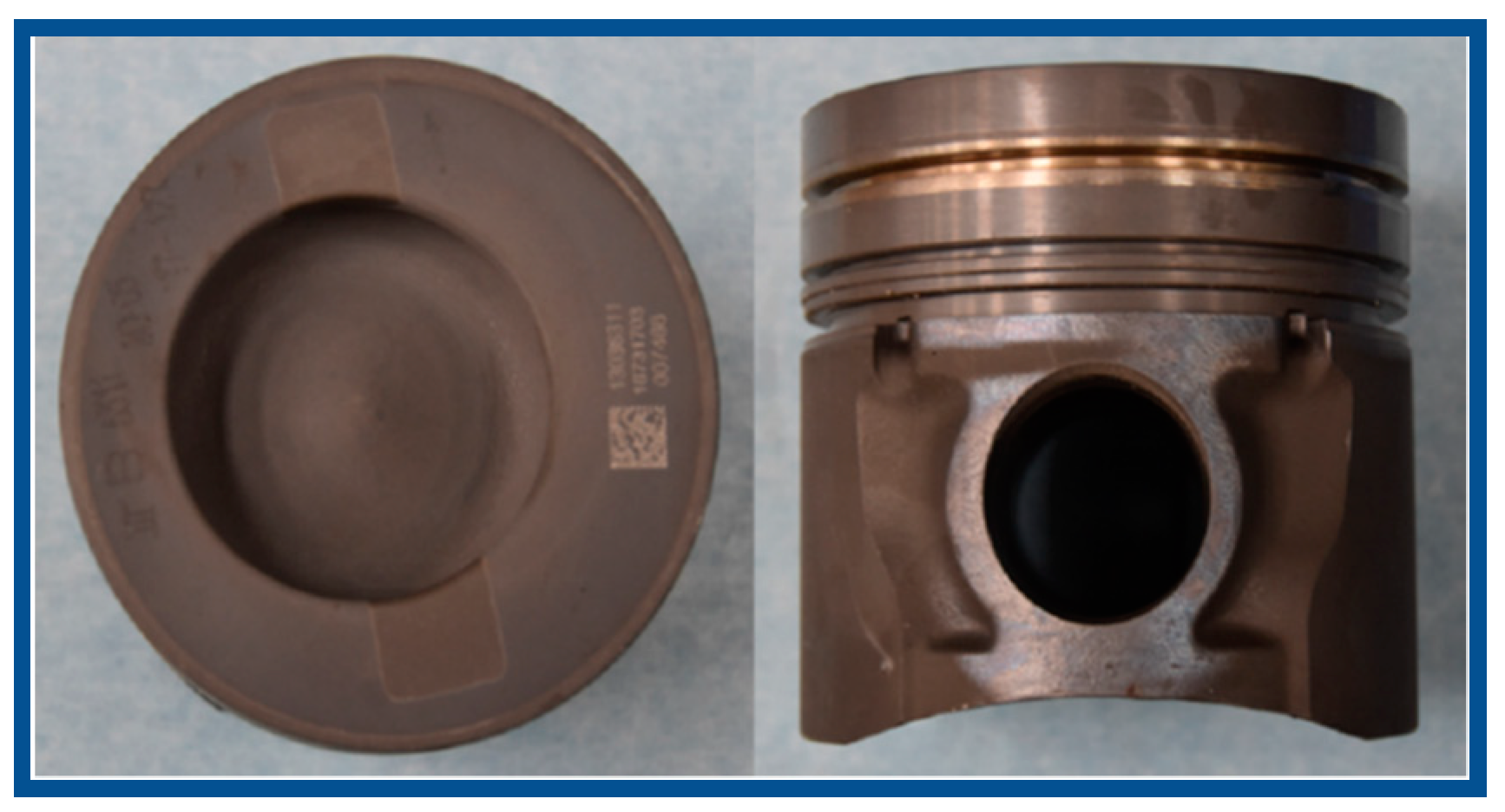
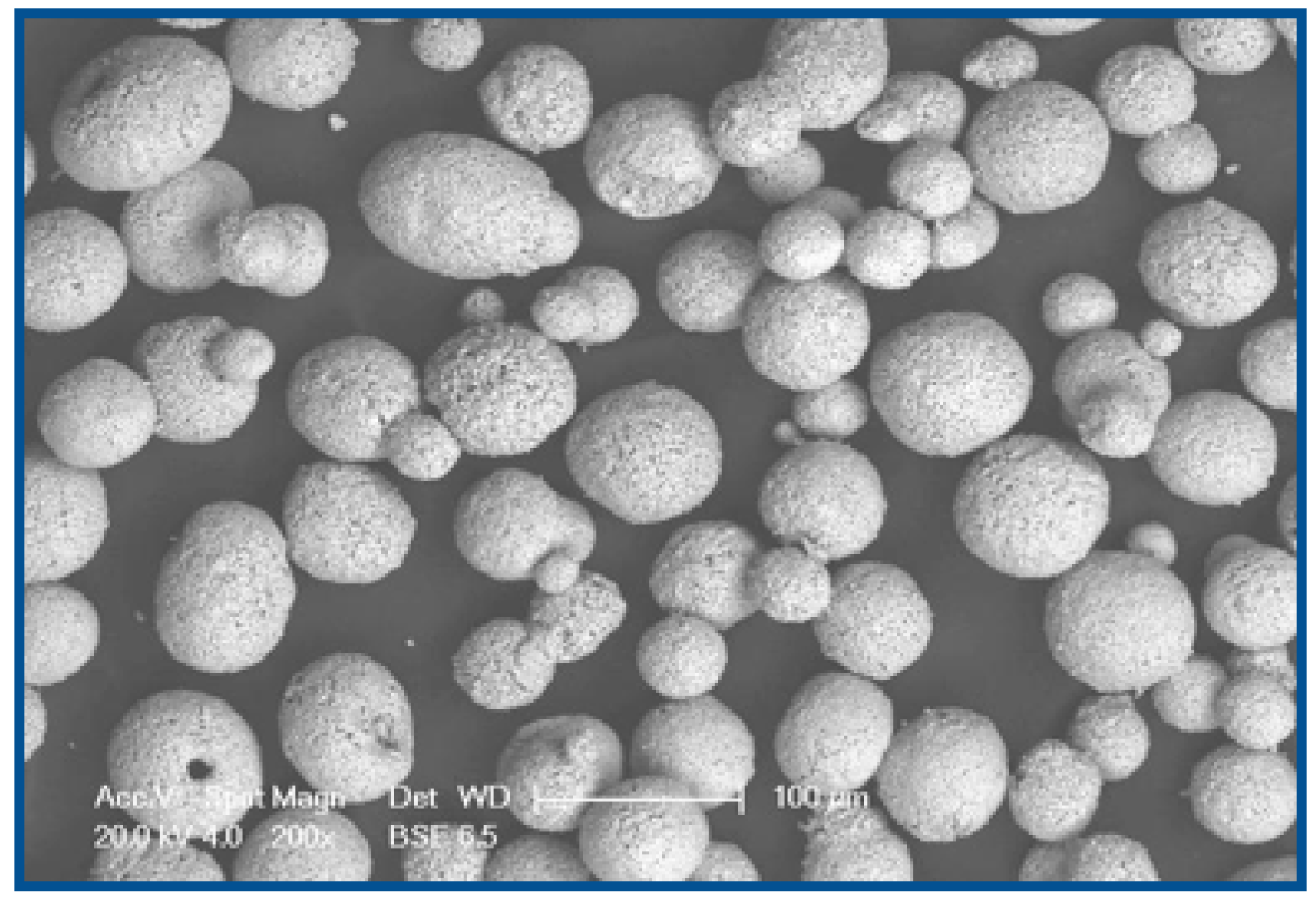
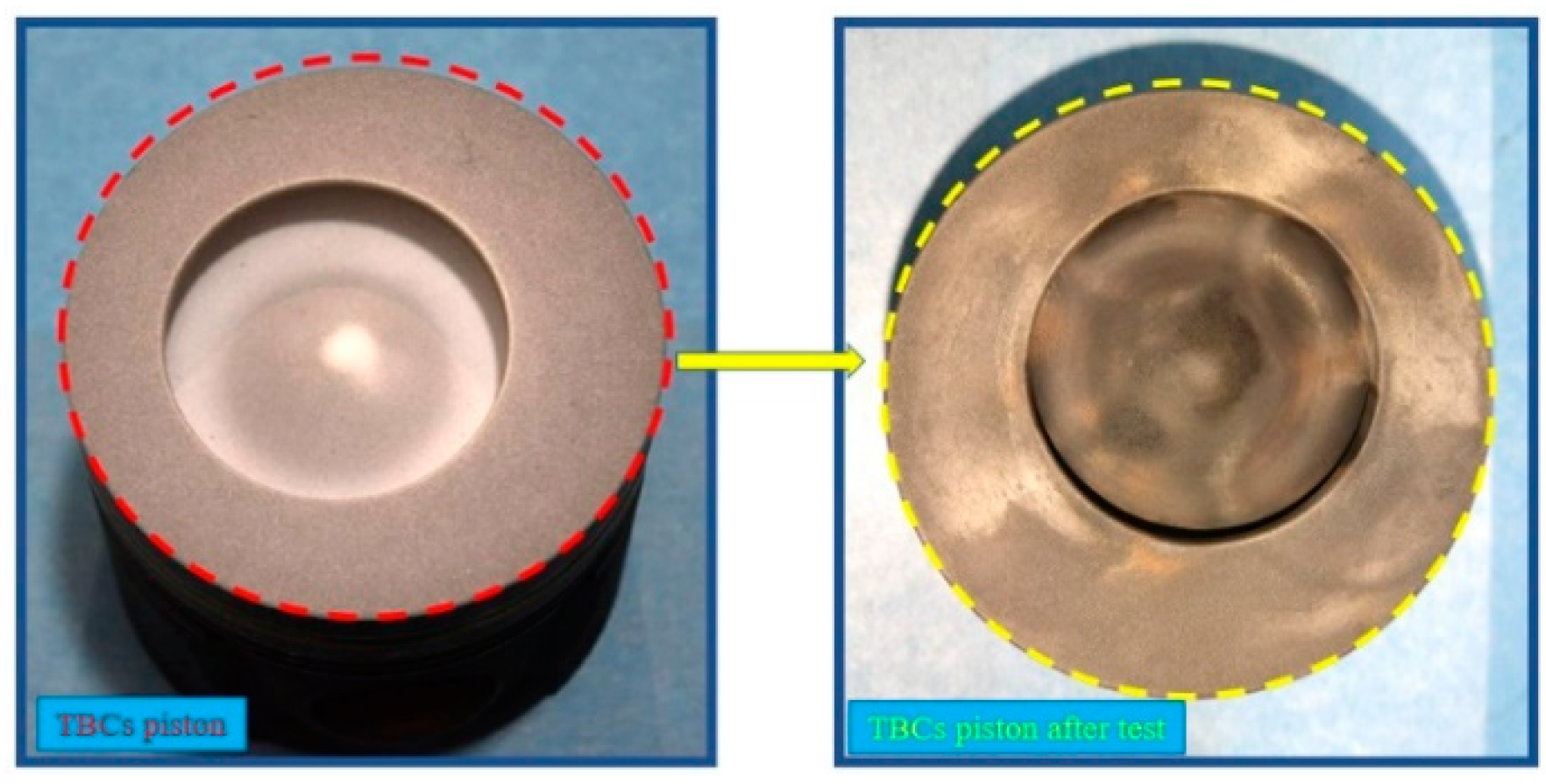

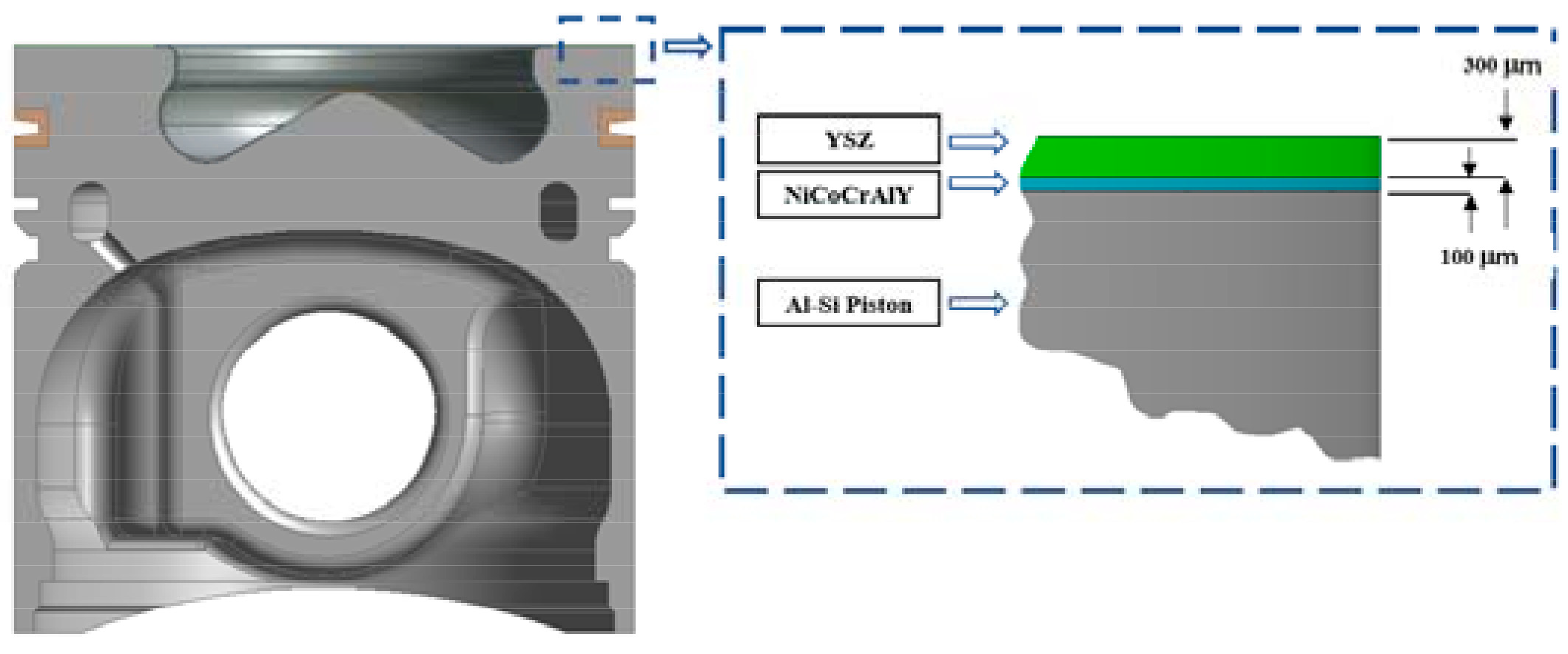
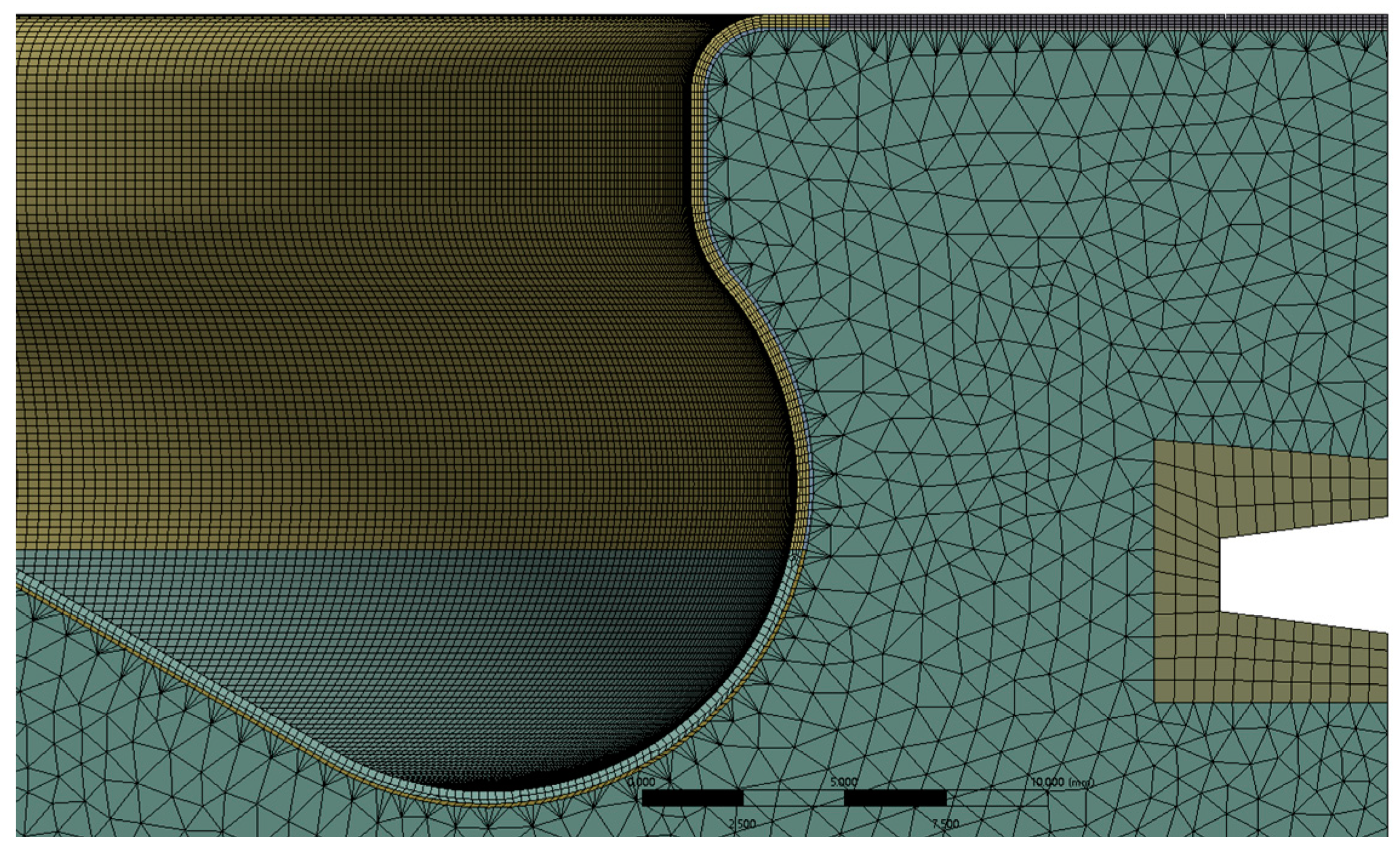
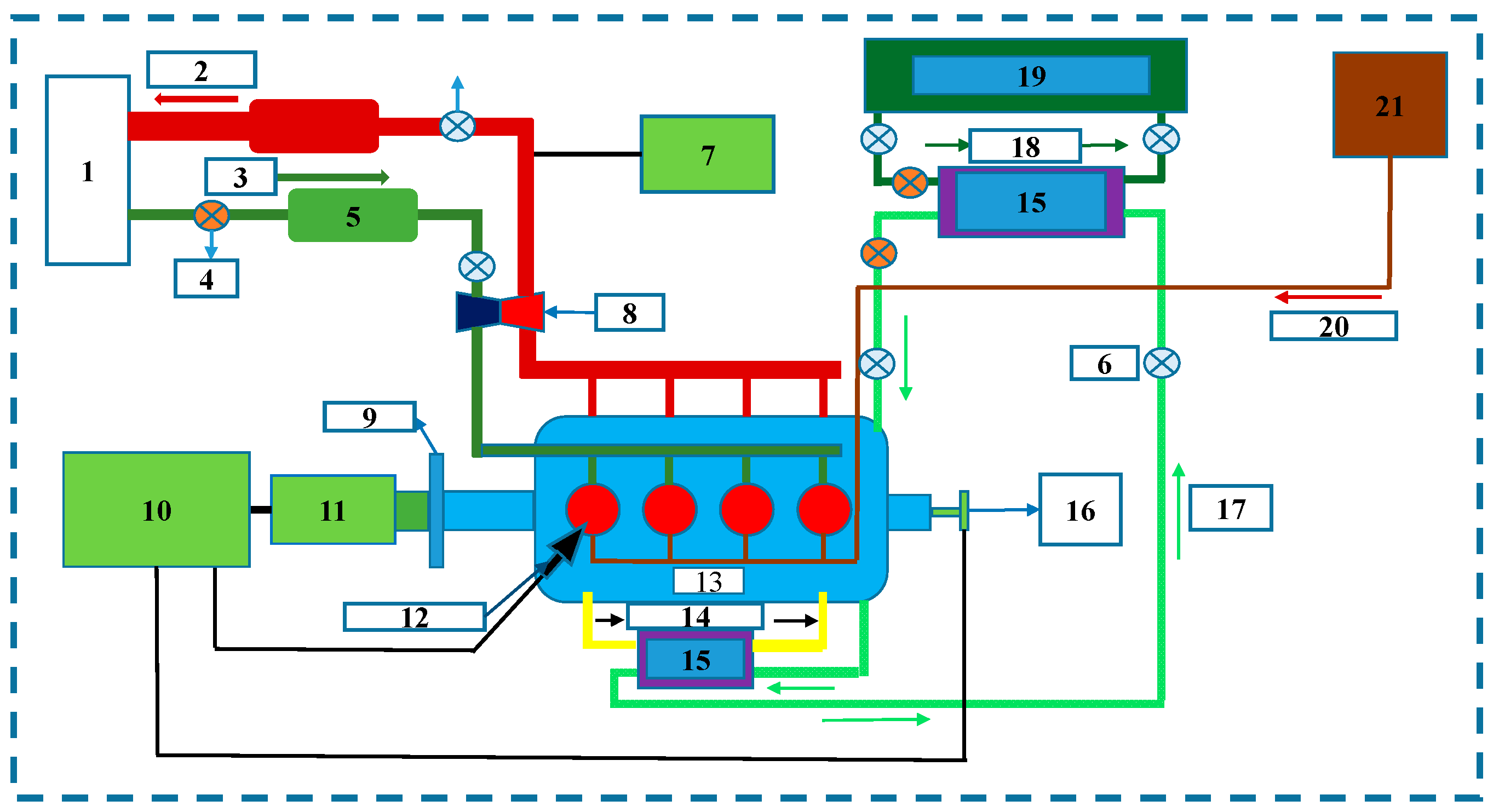
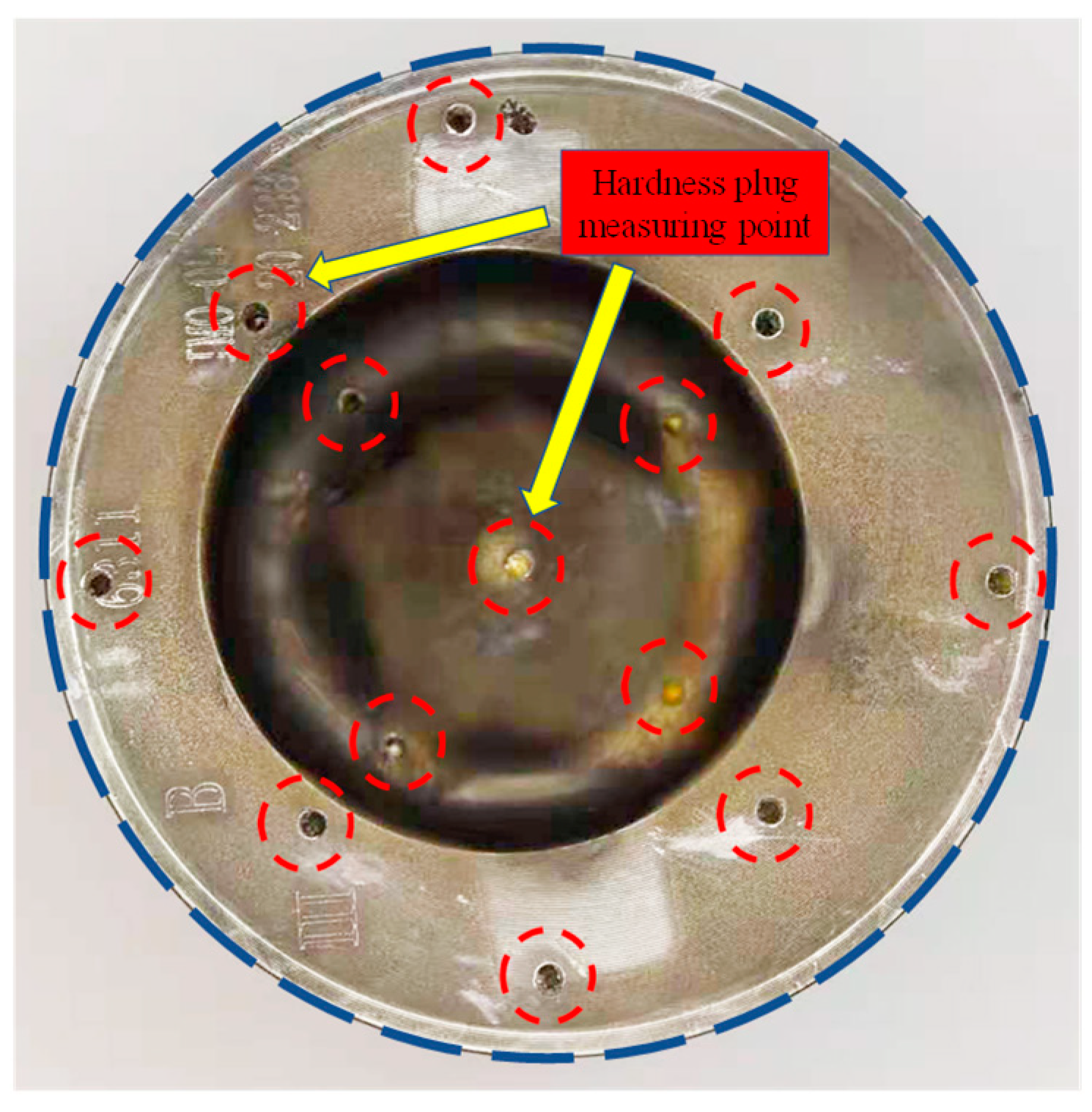



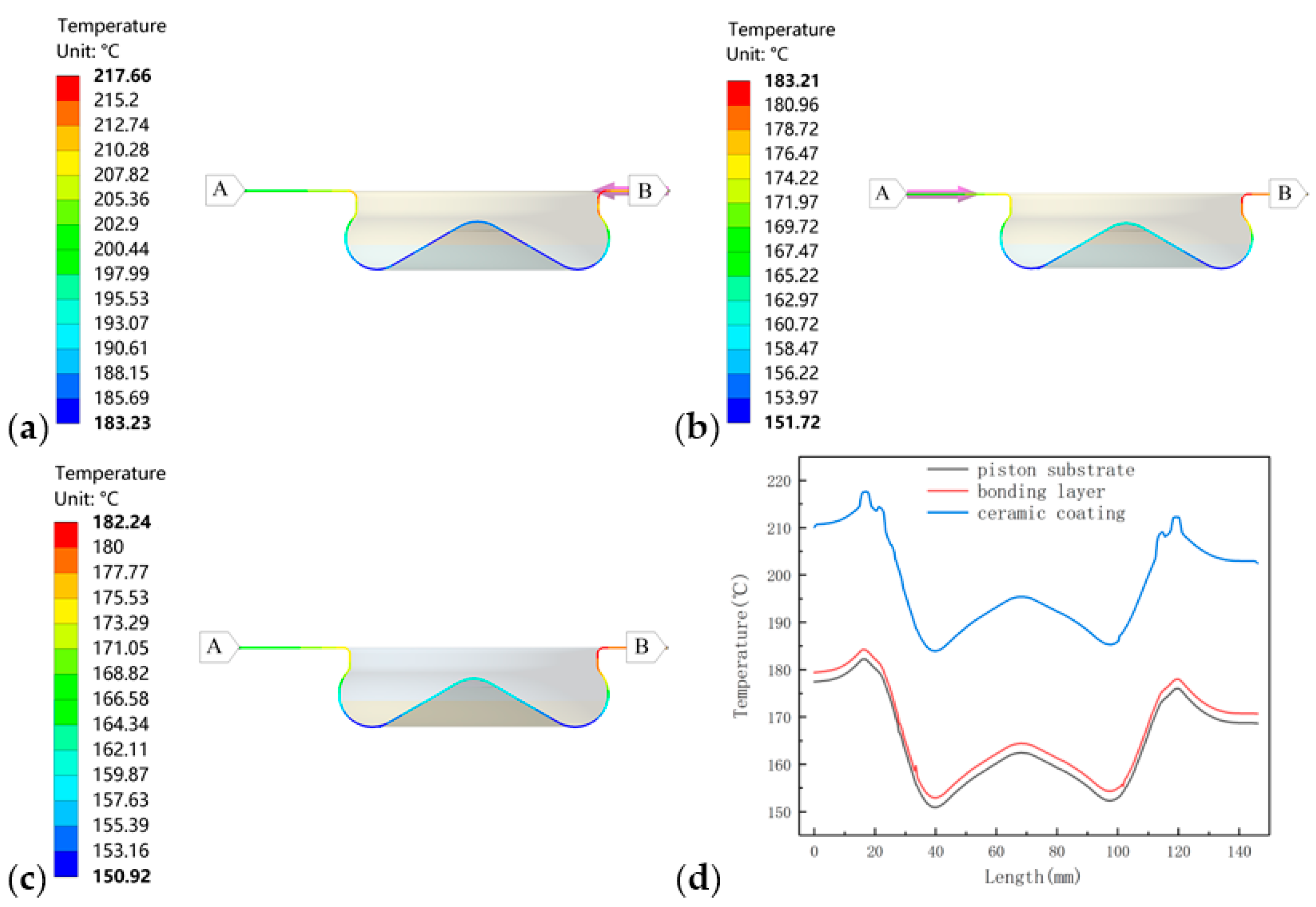
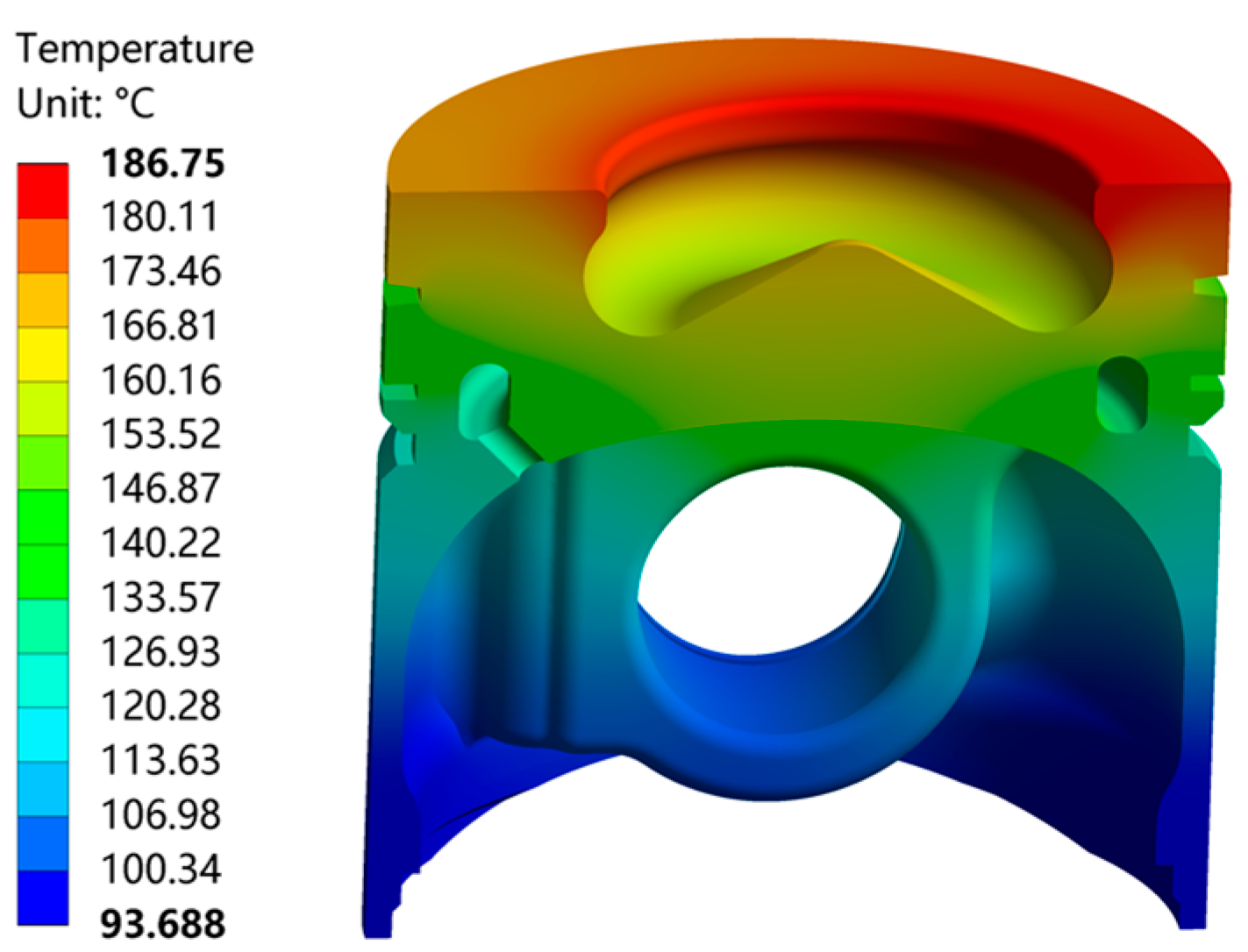
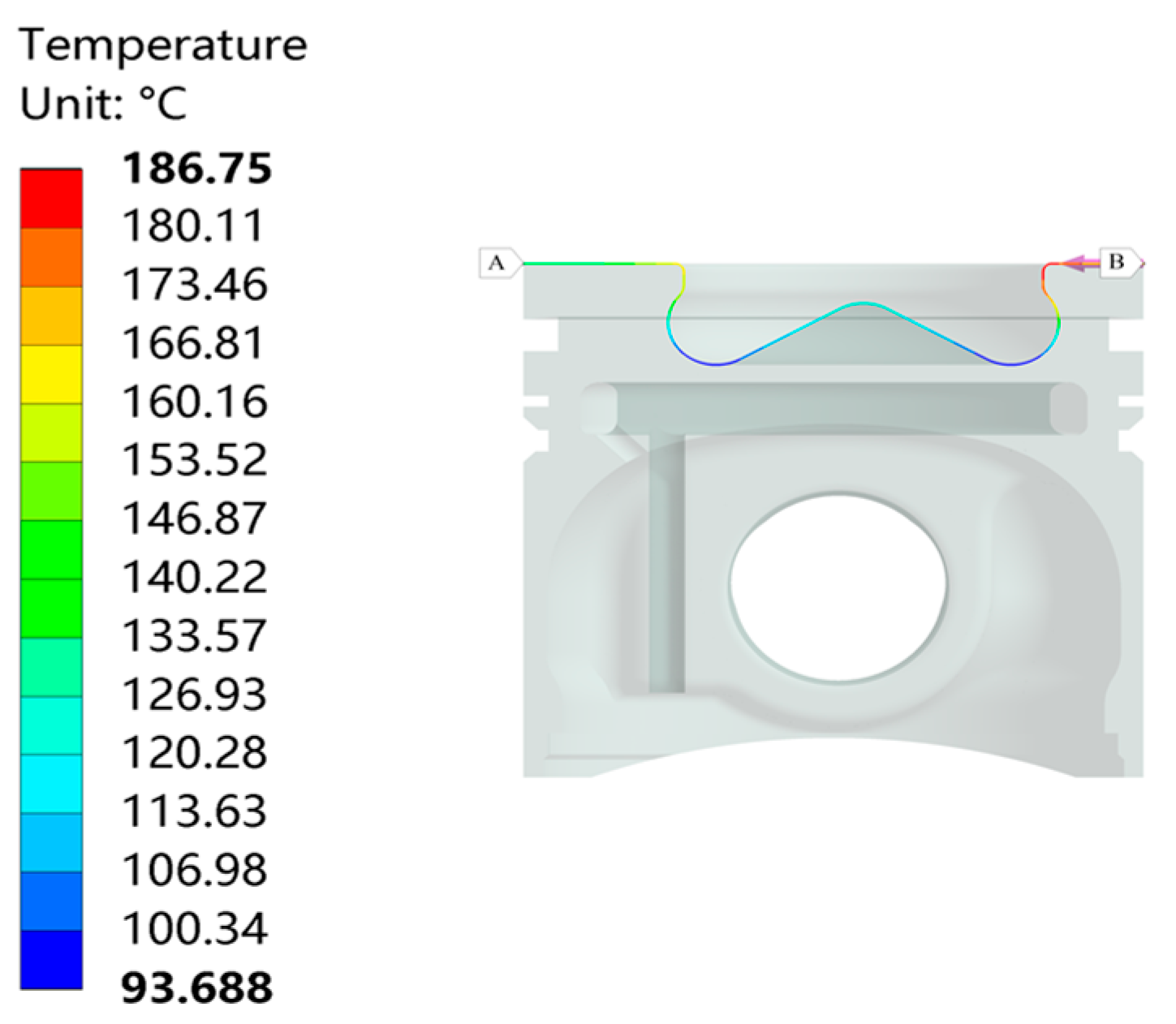
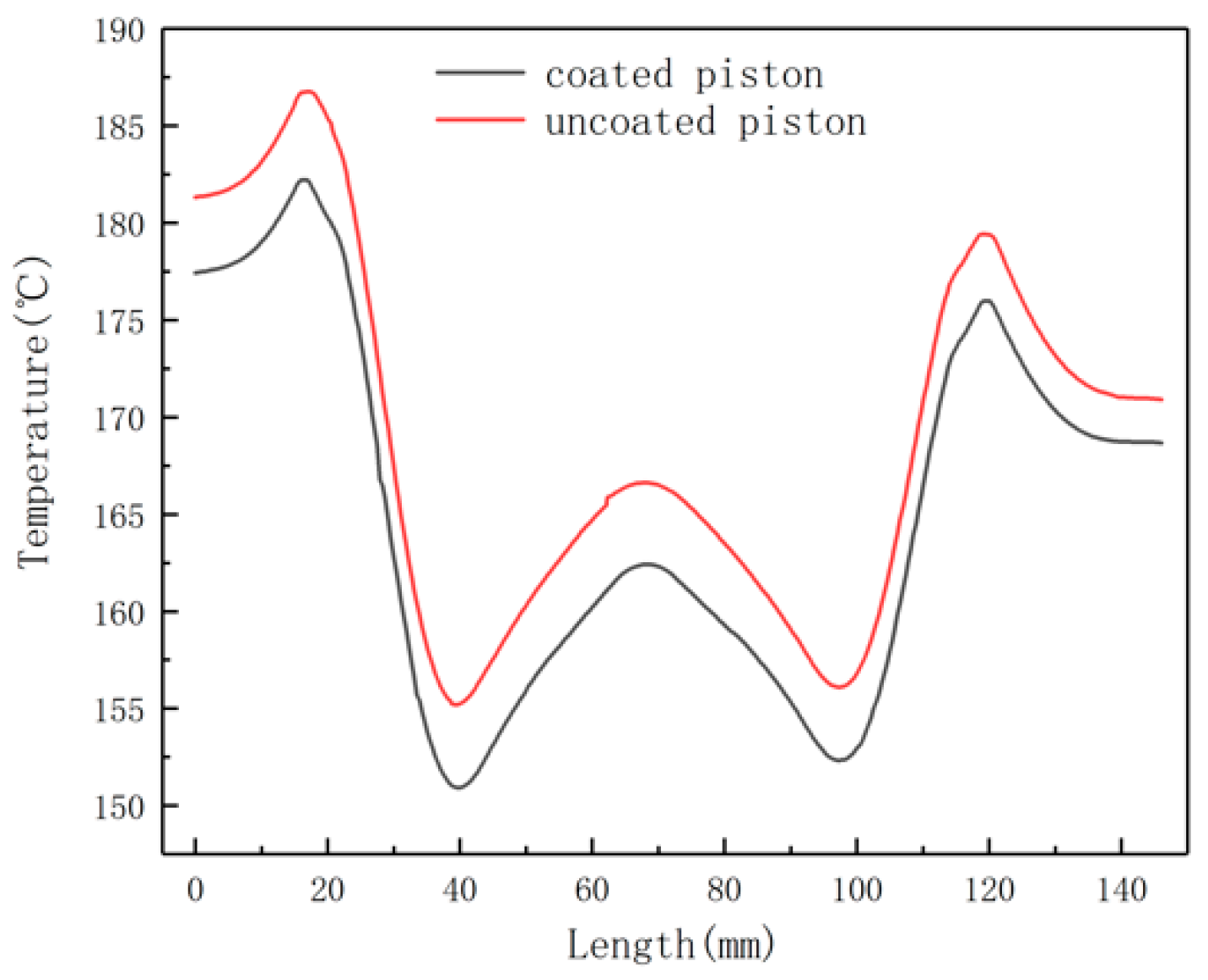
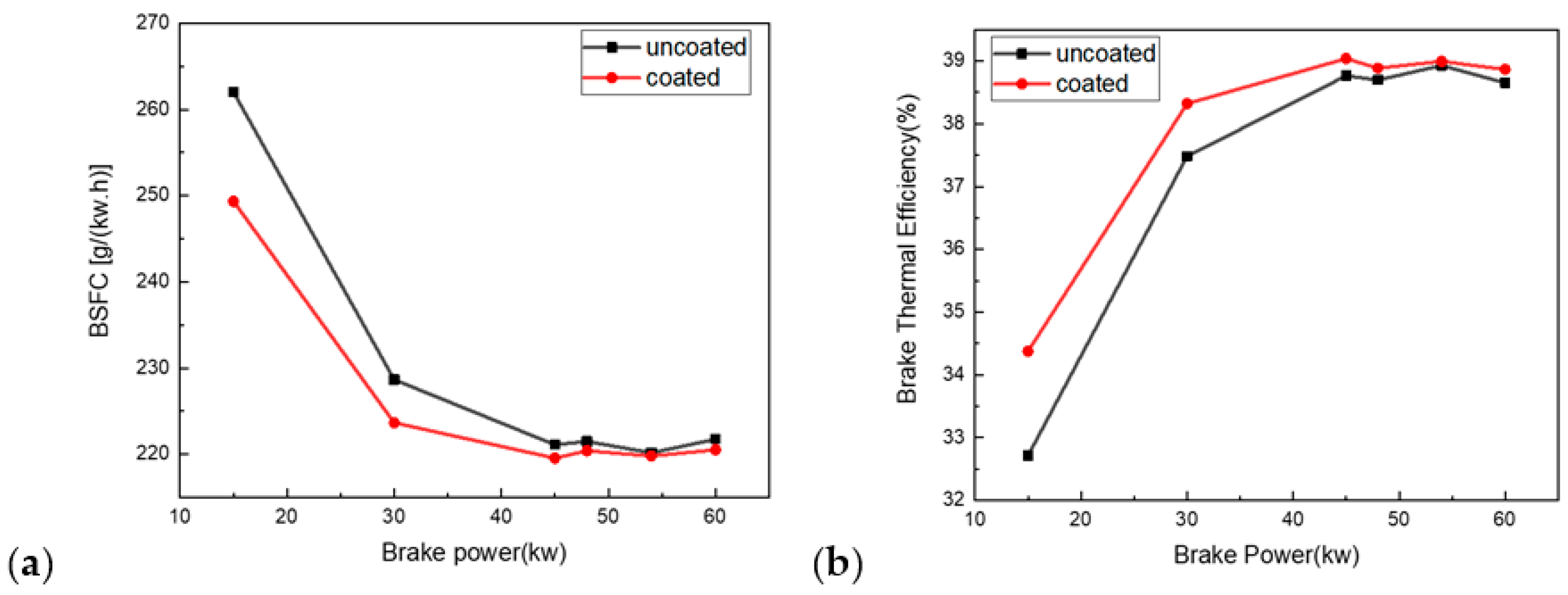
| Material | Thermal Conductivity [W/m °C] | Thermal Expansion10−6 [1/°C] | Density [kg/m3] | Specific Heat [J/kg °C] | Young’s Modulus [GPa] | Poisson’s Ratio |
|---|---|---|---|---|---|---|
| Al-Si alloy | 155 | 21 | 2700 | 960 | 90 | 0.3 |
| Steel | 79 | 12.2 | 7300 | 500 | 200 | 0.3 |
| YSZ | 2.12 | 10.7 | 6010 | 640 | 40 | 0.22 |
| NiCoCrAlY | 16.1 | 17.5 | 7870 | 764 | 86 | 0.3 |
| Thermal Boundary Conditions | Temperature (°C) | Convective Heat Transfer Coefficient (W/m2 K) |
|---|---|---|
| Combustion chamber | 460 | 507 |
| Piston fire shore | 130 | 127 |
| Upper part of the first ring | 90 | 127 |
| Middle part of the first ring | 85 | 73 |
| Lower part of the first ring | 85 | 1261 |
| Second ring | 80 | 326 |
| Piston skirt | 75 | 215.5 |
| Cooling oil cavity | 80 | 2000 |
| NO. | Engine Parameters | Specifications |
|---|---|---|
| 1 | Engine model | WP4 |
| 2 | Number of cylinders | 4 |
| 3 | Number of cycles | 4 |
| 4 | Cooling type | Water-cooled |
| 5 | Rated Speed | 1500 rpm |
| 6 | Bore Diameter | 105 mm |
| 7 | Stroke | 130 mm |
| 8 | Compression ratio | 18:1 |
Publisher’s Note: MDPI stays neutral with regard to jurisdictional claims in published maps and institutional affiliations. |
© 2021 by the authors. Licensee MDPI, Basel, Switzerland. This article is an open access article distributed under the terms and conditions of the Creative Commons Attribution (CC BY) license (https://creativecommons.org/licenses/by/4.0/).
Share and Cite
Fei, C.-G.; Qian, Z.-Q.; Ren, J.; Zhou, X.-J.; Zhu, S.-W. Numerical and Experimental Research on Thermal Insulation Performance of Marine Diesel Engine Piston Based on YSZ Thermal Barrier Coating. Coatings 2021, 11, 765. https://doi.org/10.3390/coatings11070765
Fei C-G, Qian Z-Q, Ren J, Zhou X-J, Zhu S-W. Numerical and Experimental Research on Thermal Insulation Performance of Marine Diesel Engine Piston Based on YSZ Thermal Barrier Coating. Coatings. 2021; 11(7):765. https://doi.org/10.3390/coatings11070765
Chicago/Turabian StyleFei, Chun-Guang, Zuo-Qin Qian, Jie Ren, Xiang-Jun Zhou, and Si-Wei Zhu. 2021. "Numerical and Experimental Research on Thermal Insulation Performance of Marine Diesel Engine Piston Based on YSZ Thermal Barrier Coating" Coatings 11, no. 7: 765. https://doi.org/10.3390/coatings11070765






